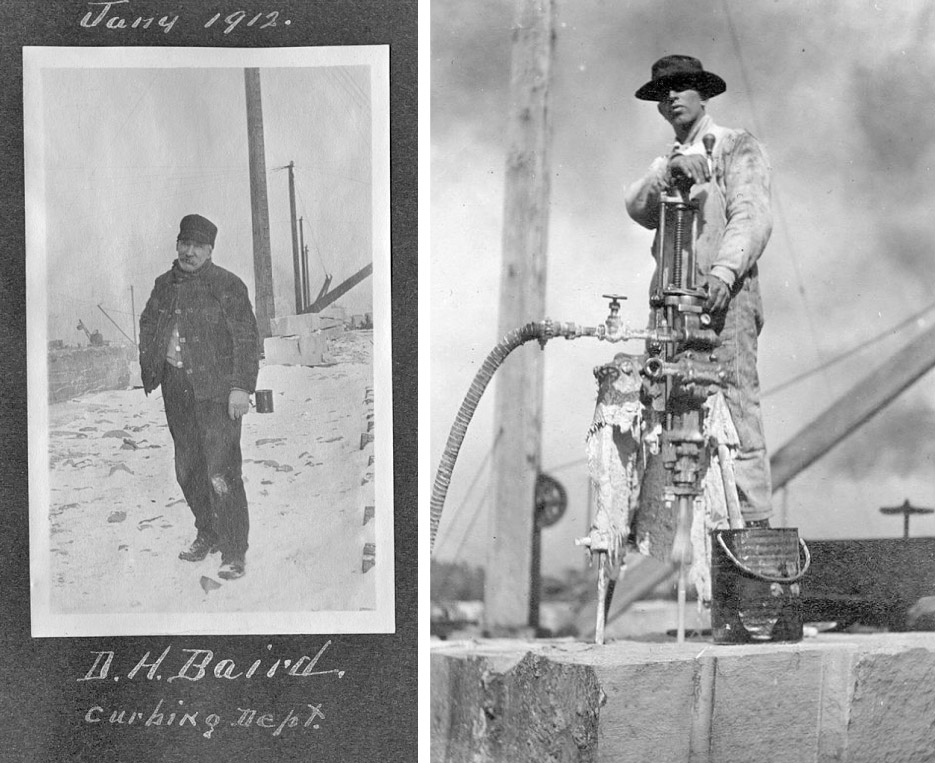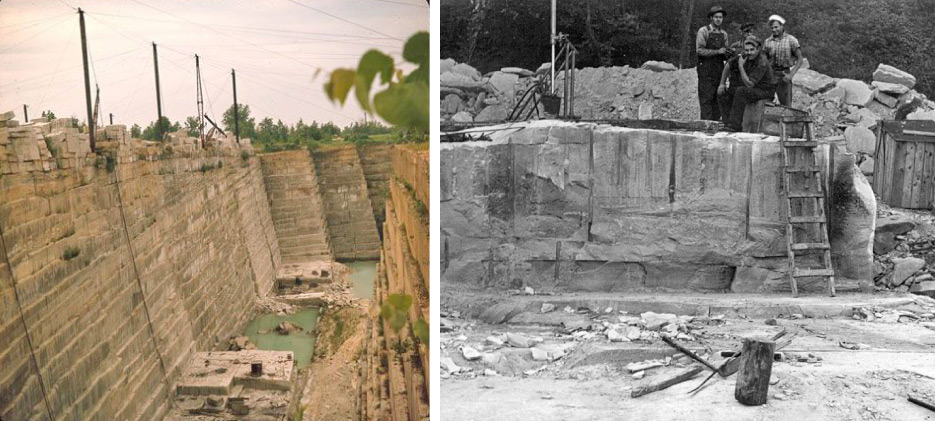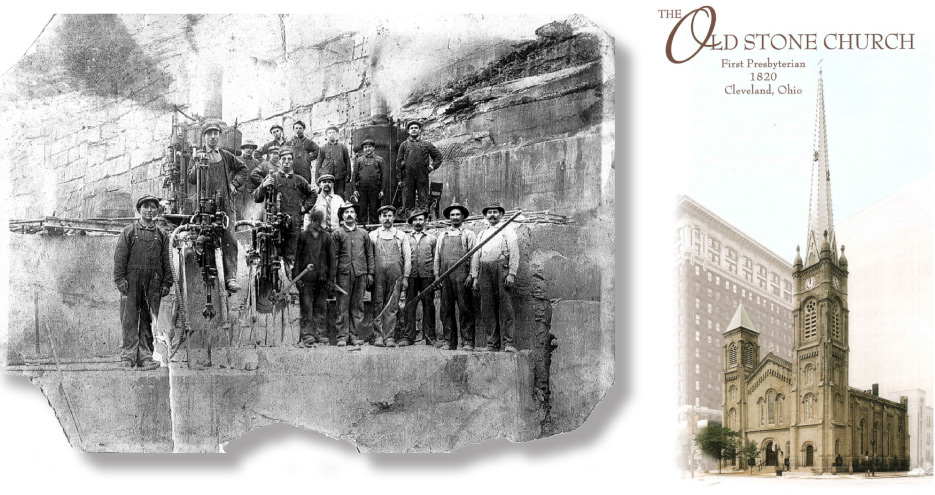A Short History of Cleveland Quarries
The CLEVELAND QUARRIES CO. is a major extractor of sandstone deposits at Amherst and formerly at Berea, Ohio. The history of the company was closely linked with those of the city of Berea and Baldwin-Wallace College. The first corporate ancestor of the Cleveland Quarries Co. was founded in 1833 by John Baldwin, organizer of Baldwin University, who one night on his farm came across a piece of stone that had marvelous knife-sharpening abilities.
Seeing that the sandstone, soon called “Berea grit,” was the key to the financial future of his academic enterprises, he set up a lathe to cut grindstones and leased out his land to others who mined the product. Soon there were a number of small quarry companies operating along the Rocky River, and the grindstones produced in the area became popular among farmers for sharpening tools. Meanwhile, sandstone became a desirable building material, and the quarries at Berea and Amherst, where the sandstone was also found, supplied commercial needs.
 |
|
Above, left: Mr. B.H. Baird, Curbing Dept. Above, right: Quarryman test drilling, C 1930s |
 |
|
Above, left: Berea Quarry, Before Closure in 1939 Above, right: Drilling and splitting blocks from a quarry ledge. |
 |
|
Above, left: Berea Sandstone Quarry workers. Above, right: First Presbyterian, also called The Old Stone Church. The original building was constructed in 1820, with renovations and additions occurring over the next 60 to 70 years. The second, taller spire was rebuilt and the church rededicated in 1884, following repair and interior reconstruction after a fire. This version is essentially the building standing today in Cleveland. One feature of the building are the priceless Louis Comfort Tiffany Stained glass windows. The most recent spire renovation was in 2006. |
In 1886 the Cleveland Stone Co. was formed from several small companies operating in both locations. Later (1929) Cleveland Stone merged with Ohio Quarries and Ohio Cut Stone to become the Cleveland Quarries Co. The quarries at Berea and Amherst supplied stone for buildings throughout the U.S., including such Cleveland landmarks as the Old Stone Church, Fairmount Presbyterian Church, the Hope Memorial Bridge, and the Board of Education Building.
After local quarries became part of Cleveland Stone, the corporate owners bought the land from underneath the financially strapped Baldwin-Wallace College; though the city was fearful of losing the college, it was rebuilt there with stone donated by the corporation. Eventually the Berea quarries were exhausted, their cavernous pits providing local swimming holes and later, the basis of Berea Quarries Park in the Rocky River Reservation of Cleveland Metroparks. When the last Berea stone was quarried in 1939, the company moved its mining operations to Amherst, where it estimated that another 100 years’ supply of stone remained.
Operated in the 1980s by the Standard Slag Co. of Youngstown, OH, the Cleveland Quarries Co. was purchased after a brief shutdown in 1993 by Walter Molnar.
Source: Case Western Reserve University